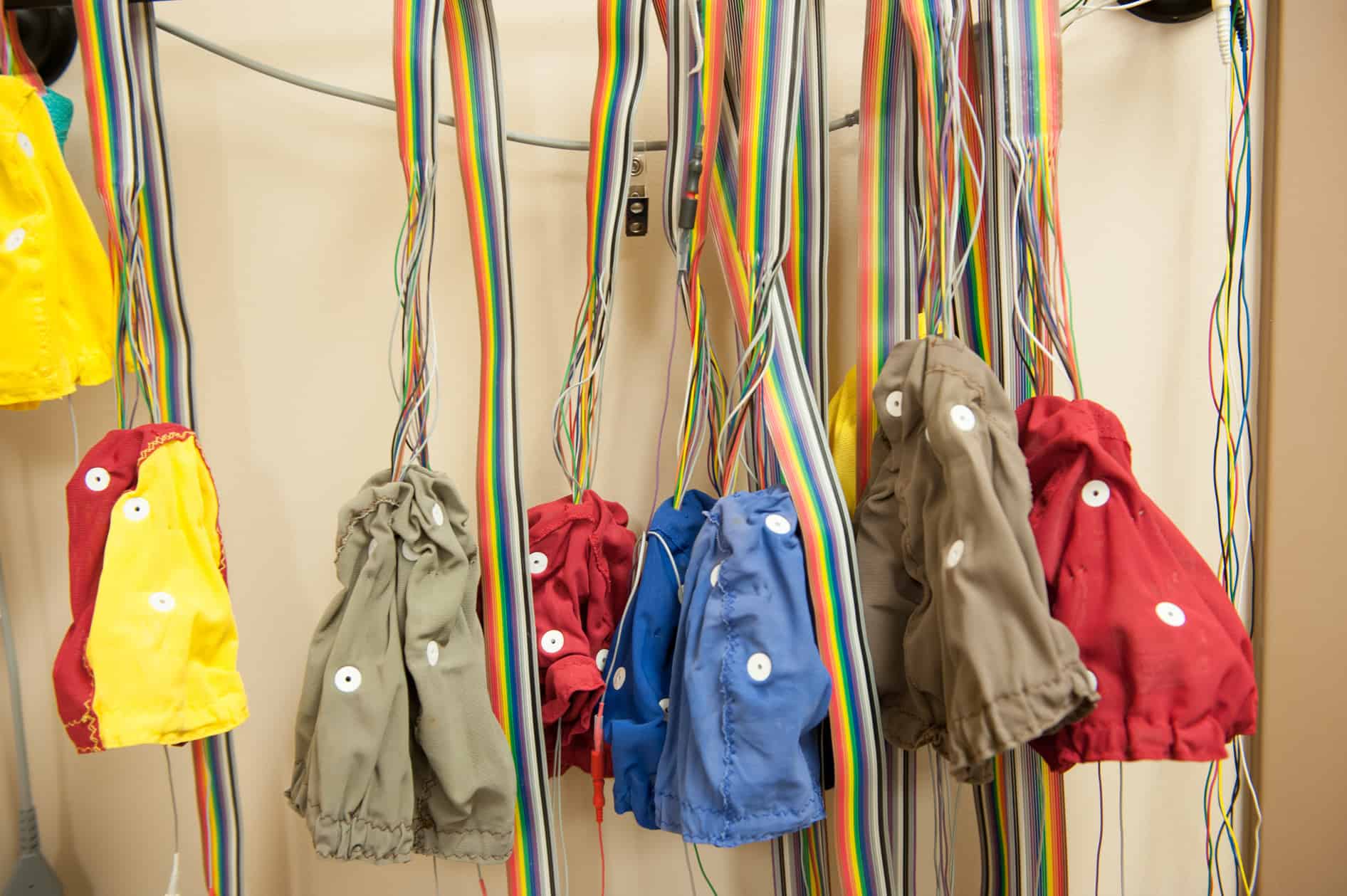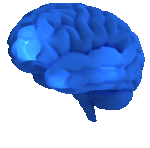
qEEG-Neurofeedback Basics
 What is EEG-Neurofeedback?
What is EEG-Neurofeedback?
EEG-Neurofeedback (EEG-NFB) trains the brain. Small sensors are placed on the scalp which monitor brain electrical activity. The results are fed through an FDA-registered database and users are given real-time feedback to optimize their brain wave patterns. This feedback comes in the form of changes in a video display or sound pattern. By rewarding more healthy brain states, your brain learns to function better long-term.
What can EEG-Neurofeedback help?
EEG-NFB is commonly used for ADD, ADHD, depression, anxiety, autism, learning disorders, PTSD, panic attacks, traumatic brain injury and sleep problems. NFB is training in self-regulation, and good self-regulation is essentially the definition of good brain function.
EEG-NFB targets the bioelectrical functioning of the brain. In the case of organic brain disorders such as early dementia or parkinson’s, EEG-NFB may be useful for getting the brain to function better and improving quality of life rather than curing the condition. If the issue is one of dysregulation, then there is no disease to be cured and self-regulation may very well be a complete remedy.
Just as physical exercise may be expected to help people with a body, Brain exercise – here in the form of EEG-NFB may be expected to benefit individuals that have a brain. EEG-NFB has helped children with attention deficits and other forms of disruptive and disturbing behavior. EEG-NFB has helped adolescents who struggled with anxiety and depression, and adults have effectively addressed symptoms of physical and emotional problems such as migraines, PTSD, seizures, stroke or traumatic brain injuries. EEG-NFB training has been extensively studied by the U.S. military for improving performance and is often used by individuals looking to enhance performance and abilities in sports, business and the arts.
With all that said, no single therapy of any kind (even exercise) necessarily works for everybody. See the post on the multi-dimensional approach to brain health at the MaxWell Clinic for a larger discussion of why this might be the case
How is EEG-Neurofeedback done?
Prior to your initial visit for feedback you will have had a medical evaluation, and have completed neuropsychiatric testing particular to your situation and an extensive online symptom questionnaire. This questionnaire is used in the interpretation of the quantitative EEG (qEEG). You will then have a qEEG (quantitative electroencephalogram) completed which will measure your brainwave type, strength and co-ordination.
The qEEG is painless and is acquired by placing a cap with 19 electrodes on the head. After the testing is completed your results are compared with and FDA-registered database to determine areas of over– and under-activity compared to the average of people of the patient’s same age and sex. From this information a brain map is created. The results of your brain map, symptom checker, and other testing results are all extensively reviewed and from this interpretation a plan of care is crafted.
During each EEG-NFB sessions an individualized number of carefully placed sensors are placed on the head and the computer is programed for the desired results. The individual then watches a computer screen gets feedback that rewards the desired brainwave patten in the form of images and sounds from the screen.
How long does EEG-neurofeedback take?
Each EEG-NFB session may last anywhere from 10 minutes to 30 minutes. A typical course of therapy takes 20-40 sessions, with 20 being average. The usual schedule is 2 to 3 sessions per week, but daily or even twice daily sessions may be recommended for certain circumstances.
How long do the effects of neurofeedback last?
There have been long term followup on patients who have sustained NFB improvements for 10-20 years. It is important to continue your training up to 5-10 sessions after you’ve seen the major symptoms improve to “entrain” the new, more functional pattern. As EEG-NFB re-trains the brain once the successful training is complete -unlike medications- treatment stops. Interestingly, there have been case studies of regression back to the pre-trained state with head injury, but this is rare.
Can NFB be used while a patient is on medication?
There is no way to predict a medication change. The theory about reducing dosages is that as the brain is trained to function more normally it works more efficiently. The same dosage seems to have a stronger effect on a more efficient brain, and thus reduction or elimination may be required.
How does NFB training transfer to everyday situations?
The positive reward that you hear or see during neurofeedback reminds your brain to return to the goal (to relax, to focus or whatever your particular goal may be. As you train, you won’t have to “think” about the reward in order to remember how to be more focused, for example. In everyday life, the effects of NFB tend to generalize, bringing more stability under demand, and more resilient. The brain is training to self-regulate.
The effects are often much like the effects of regular physical exercise, in that you become more alert during the day, and sleep better at night. Through NFB training, once the new pathways have been fired often enough, the brain learns the new pattern, and the activity in the brain is physically changed. For certain training protocols the brain may become quite fatigued the next day as it recovers from the “work-out”.
This blog provides general information and discussions about health and related subjects. The information and other content provided in this blog, website or in any linked materials are not intended and should not be considered, or used as a substitute for, medical advice, diagnosis or treatment. This blog does not constitute the practice of any medical, nursing or other professional health care advice, diagnosis or treatment. We cannot diagnose conditions, provide second opinions or make specific treatment recommendations through this blog or website.
If you or any other person has a medical concern, you should consult with your health care provider or seek other professional medical treatment immediately. Never disregard professional medical advice or delay in seeking it because of something that you have read on this blog, website or in any linked materials. If you are experiencing a medical emergency, please call 911 or call for emergency medical help on the nearest telephone immediately.
